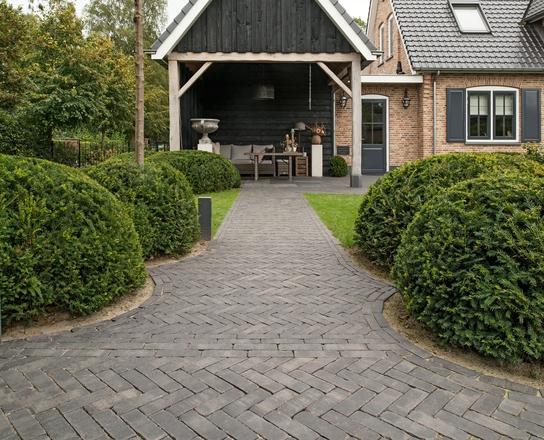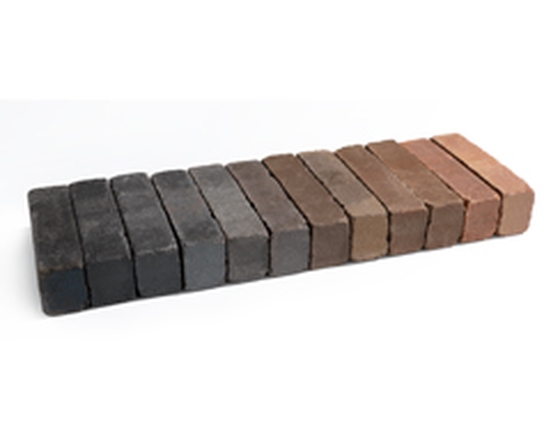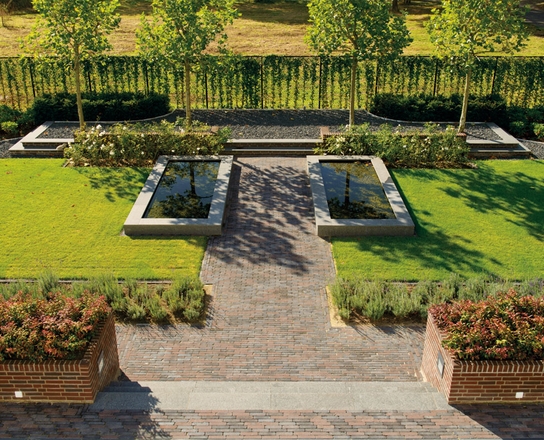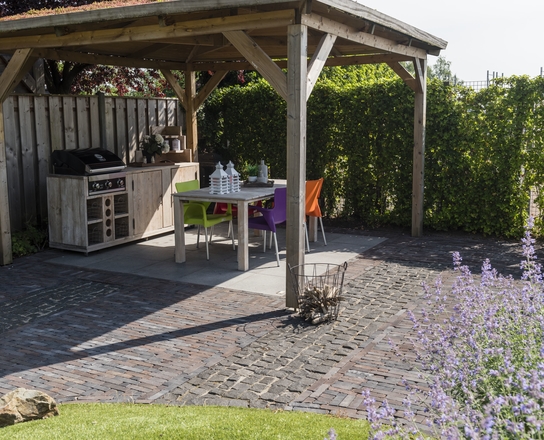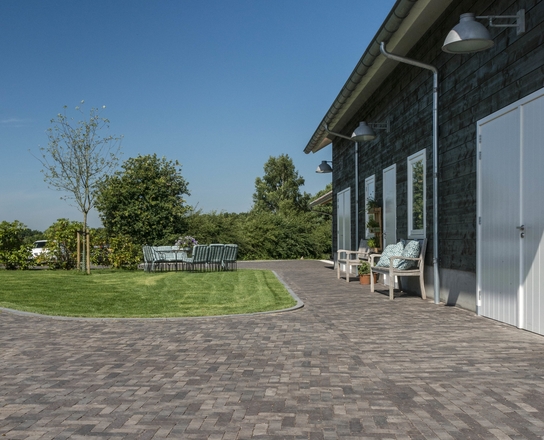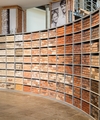
Clay pavers or ceramic slabs in the garden?
Clay pavers and ceramic slabs are a good choice for a driveway, garden path, or patio. They are all made from clay, but differ in appearance, size, laying, and maintenance.
The difference between clay pavers and ceramic slabs
Clay pavers and ceramic slabs are all made from clay. This makes them extremely strong and colourfast. The production method and clay mixtures all differ greatly. Pavers are made primarily from river clay, while the clay for ceramic slabs comes from quarries. Their dimensions also vary. Paving bricks have a characteristic brick shape and are usually between 50 and 90 mm thick. Their convenient size means that they can be laid in creative patterns and shapes. They also have a relatively high number of joints, which allows rainwater to flow away easily. Ceramic slabs are usually larger than pavers and are square or rectangular in shape. The slabs are around 20 mm thick and have a hard, anti-slip top layer.
Nostalgic conviviality or sleek elegance
The biggest difference is in appearance. What mood do you want to evoke in your garden? Clay pavers have a timeless, natural appearance and add a sense of nostalgic conviviality. This makes clay pavers perfect for any kind of garden. Thanks to their large size, ceramic slabs have a more sleek appearance, which makes them ideal for a modern garden. Sometimes they can be hard to distinguish from natural stone, adding a sense of chic. Do you have tiles in your living room? Then continuing the look to the outside can create a seamless appearance. You don’t have to choose. A combination of clay pavers and ceramic slabs can also be very attractive.
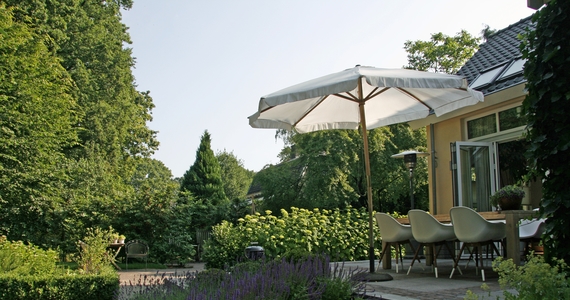
Laying garden paving
Another major difference between clay pavers and ceramic slabs is the way in which they are laid. Laying clay pavers is relatively easy to do. You need to make sure that you have a level base of sand and you then simply lay the pavers on top in your chosen pattern. You can easily remove them and reuse them without difficulty. Ceramic slabs are a little more involved. You need to lay them on a draining foundation with a layer of drainage mortar on top. You then bond the slabs and fill the joints with joint mortar. As they are bonded down, it can be difficult to reuse them again later.

Clay pavers, a sustainable, authentic Dutch product
Clay pavers are a truly authentic Dutch natural product. Our Dutch forefathers were constructing streets and buildings from brick as far back as the fourteenth century. There isn’t a single village or town in the Netherlands where you will not come across clay pavers or bricks. That gives the clay paver that familiar look. Our major rivers give us a constant supply of new clay. River clay is therefore a renewable material. What’s more , its extraction results in the generation of new nature areas in the floodplains. Since clay pavers have a lifespan of more than one hundred years, they can rightly be classed as sustainable construction materials. Ceramic garden slabs are usually imported from southern Europe and are less easy to reuse. This makes them less sustainable than clay pavers.


